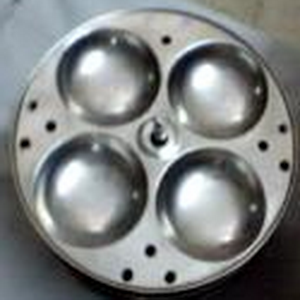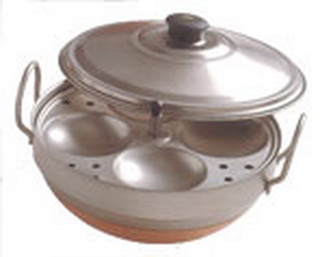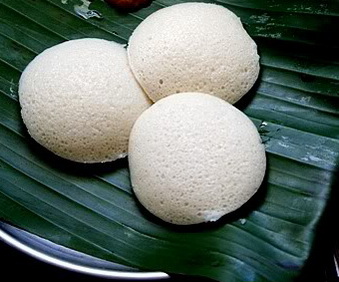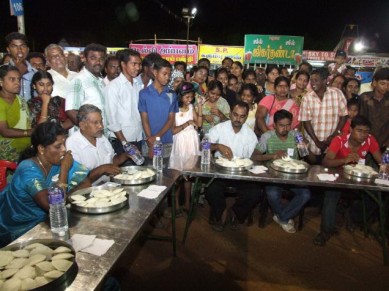


Whenever a person in Southern part of India goes to any restaurant in the mornings, one will always invariably see people eating an Indian dish called ‘idli. It is almost a substitute for bread in the south. Most often eaten at breakfast or as a snack, idlis are usually served in pairs with another dish called ‘sambhar’ or ‘chatney’. It is not known why idli is always served in pairs. They fascinated me because it is a healthy food and even the medical practitioners do not object when patients are given idli. They advise not to give any other preparations which are made up of oil whereas idli is the only dish for which hardly any oil is used. Oil contains fat and the doctors caution patients to avoid oily dishes. In the west it is bread which dominates the table at the time of breakfast. Idli is considered one of the top ten most healthiest foods in the world due to the ingredients it is made from.
Therefore the question is what is this idli which Indians especially of southern part religiously eat as a main dish for the breakfast. No one is aware who invented ‘idli’ But people who have made study of it’s origin say that its mention is found in the Kannada ( one of the Dravidian languages of India and they were the original inhabitants of India before Aryans entered India ) writing of Shivakotiacharya in 920 AD, and it seems to have started as a dish made only of fermented black lentil. Chavundaraya II, the author of the earliest available Kannada encyclopaedia, Lokopakara (c. 1025), describes the preparation of idli by soaking urad dal (black gram) in butter milk, ground to a fine paste and mixed with the clear water of curd, and spices. The Kannada king and scholar Someshwara III, reigning in the area now called Karnataka, included an idli recipe in his encyclopedia, The Manasollasa, written in Sanskrit in 1130 A.D. There is no known record of rice being added until some time in the 17th century. It may have been found that the rice helped speed the fermentation process. The Chinese chronicler Xuang Zang (7th century AD) categorically stated that there were no steaming vessels in India. Steaming vessels are the prerequisite for preparing idli. One writer of that period writes that the cooks who accompanied the Hindu Kings of Indonesia between 800-1200 AD, brought fermentation and steaming methods and their dish Kedli to South India Therefore idli must be a combination of the know how gathered both from the local eating habits and the eastern culinary. The steam cooker perhaps was imported from the east, where Hindu culture had flourished.
Now rice and dal ( black gram) are used in the preparation of idlis. Both rice and dal have to be grinded and the paste formed thereby should be stored in a large vessel so that the paste could ferment till next day. The next day the paste or the batter is cooked in a steamer that resembles a large egg poacher and is made from stainless steel or aluminium. In olden days, they were made of copper. This round bottomed steamer has two decks (some have as many as four) with moulds for four idlis on each layer. The moulds are fixed to the central rod and the idlis are cooked by the steam produced by the simmering water in the base of the pan. The rod allows easy removal.
There are various versions as to how it got that name. It is no use tracing the same as it may be the imagination of the writes It is believed that it was first known as “Ittu Avi”, pour it (or put it) and then steam it. It later turned (maruviyathu) into ittavi and then into ittali. In fact it is idle to trace it’s origin of the name as it is always said the taste of the pudding is in the eating. Or to quote Shakespere “What’s in a name? That which we call a rose by any other name would smell as sweet.” However, the name ‘idli’sounds pleasing to the ears as the taste pleases the tongue.

There are competitions in idli eating. Above picture is of one of such events. There is no recorded winner at these competitions. But there are reported instances where competitors have eaten as many as 30 idli. The competitor who eats the highest number of idli is given the prize or trophy.
